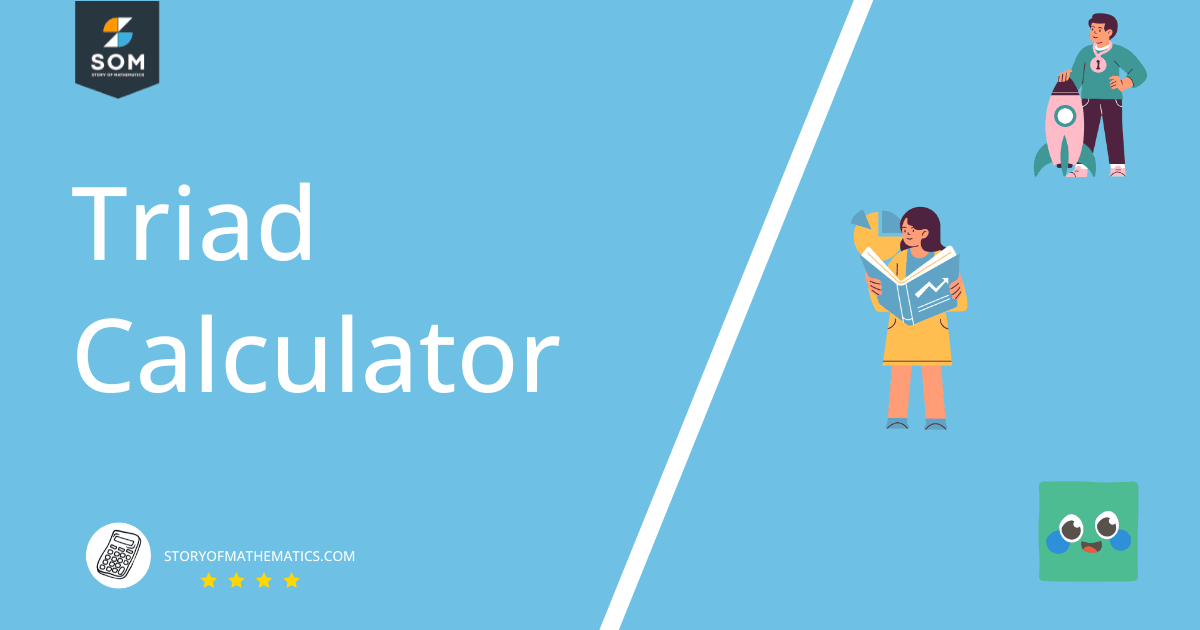JUMP TO TOPIC
Triad Calculator + Online Solver With Free Steps
The Triad calculator is a simple online tool that instantly finds every theoretically feasible fingering for a chord, depending on the settings you enter. Most of the time, all that needs to be changed is the “chord” and “root” pulldowns. The other choices’ default settings should cover most circumstances.
If the chord features a bass note other than the root, change the “bass” parameter. Letters or scaling degrees can be used to identify chord diagrams.
When modifying the advanced parameters, take caution because they could produce chords that are quite challenging to play.

What Is a Triad Calculator?
The Triad Calculator is a calculator that determines the notes that comprise a chord of a specific pattern and root. In composition, a chord is a group of notes often performed all at once.
We refer to a chord as broken if the notes are played in order. Traditionally, a chord must consist of at least three notes, although power chords consist of a root and a fifth.
You can use this Triad calculator to find which notes go into a chord of a specific kind and root.
Here are formulas for the 14 chords that are used the most frequently across all keys, including A chord notes, C minor chord notes, and partially diminished 7th chord notes.
Chord understanding is essential if you want to get more involved with playing, creating, and interpreting music.
How To Use a Triad Calculator
You can use the Triad Calculator by following the given detailed guidelines; the calculator will then provide you with the desired results. You can follow the instructions to get the Notes for the allocated tones.
Step 1
Fill in the provided input box with the provided tones.
Step 2
To calculate the chord for the provided tones and to view the complete, step-by-step solution for the Chord Calculation, click the “Submit” button.
How Does a Triad Calculator Work?
The Triad Calculator works by figuring out each theoretically feasible fingering for a chord depending on the options you enter.
This tool can help provide potential symbols for complex chords, but it is not a replacement for accurate chord analysis, which must always consider the context. Even if there isn’t a 3rd or 5th, it will take a broad variety of input and try its best to locate a corresponding chord symbol.
A “chord” is a group of two or even more notes that all belong to the same pitch class and can be examined. Both the results and the understanding of the input are always precise. Although it is stated that an A7(9) chord always contains a B note, a supreme 13th always includes all of its parts even though certain parts may be removed.
Just choose the base note as well as the chord category in the calculator’s top two fields if you wish to learn what notes develop a chord. The output of the chord calculator—chord notes and a formula for chord construction—can be read at the bottom of the screen.
The formula indicates which significant scale degrees are required for the selected key. The arpeggiated chords indicate whether you should increase or decrease a degree.
Use the scale degrees indicated by the values and, if necessary, add arpeggiated chords. The first level of D major is D, the third level is flattened to F, the fifth level is flattened to A, and the 7th level is flattened to C, so the tones for the 7th chord in D minor would indeed be D, F, A, and C.
Most Fundamental Chord in Music
The triad, which consists of three notes, is the most straightforward basic chord in music. There are four different sorts of thirds (intervals) that can be utilized to create a chord:
- major
- minor
- diminished
- augmented
Major Chord in Music
Having a root, major 3rd, and perfect 5th makes up a major chord. A major triad is a chord that solely contains the three notes indicated above. A major 7th chord and a major 6th chord are two examples of additional major chords.
Solved Examples
Let’s solve some interesting examples to better understand the Triad Calculator’s working.
Example 1
Find the C major chord notes.
Solution
- We’ll start with the C major scale, which has the following notes: C D E F G A B (if you’re not familiar with these letters, read up on intervals and scales first).
- Now, we require the major chord’s formula: 1, 3, 5. The numerals indicate which notes of the major scale we need.
- The C major scale’s notes are 1:C, 2:D, 3:E, 4:F, 5:G, 6:A, and 7:B. The scale’s initial degree is C, followed by D, and so forth.
- The C, E, and G notes make up the first, third, and fifth degrees of the C major chord, which our formula says.
Example 2
Find the A major chord notes.
Solution
- Starting with the A major scale, the notes are A, B, C, D, E, F, and G.
- Use the same calculation as in the preceding example: 1, 3, 5.
- The notes of the A major chord are A, C, and E, which are the first, third, and fifth notes of the A major scale.
Example 3
Find the C minor notes.
Solution
- We begin with the C major scale: C D E F G A B.
- The minor chord formula is 1, 3, and 5, which may be found in the chord calculator.
- The first, third, and fifth degrees—C, E, and G—are required.
- We’ll now use accidentals. The number 3 is next to a flat symbol. It implies that the third degree of the scale needs to be lowered by one semitone. We obtain an E when we lower the E note (E flat).
- Notes in a C minor chord are C, E, and G.
